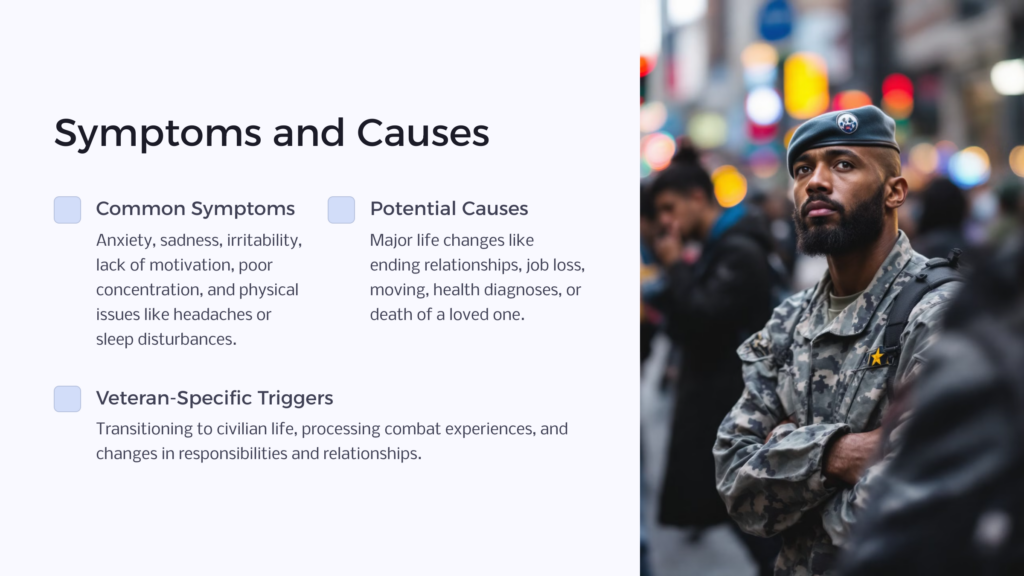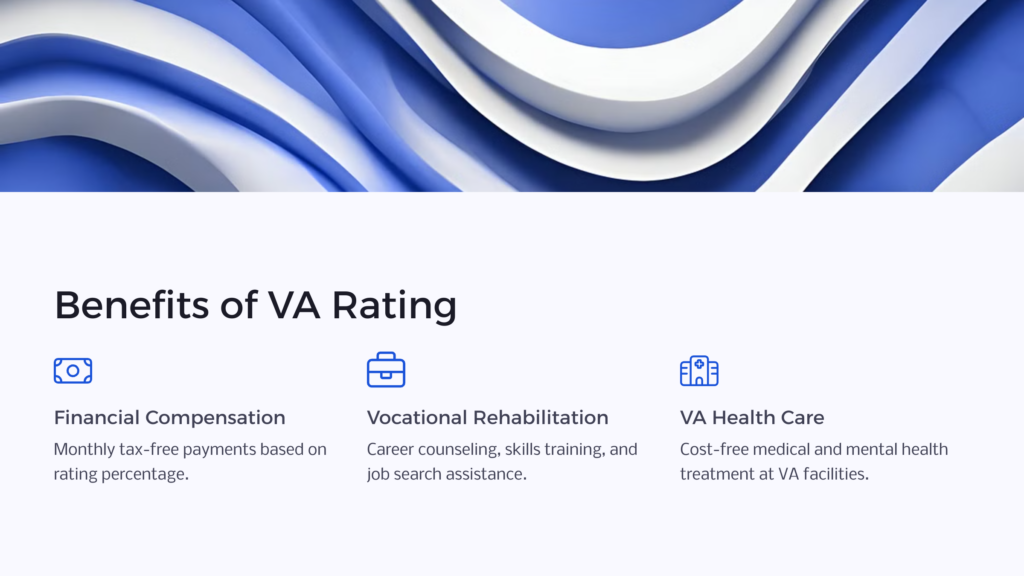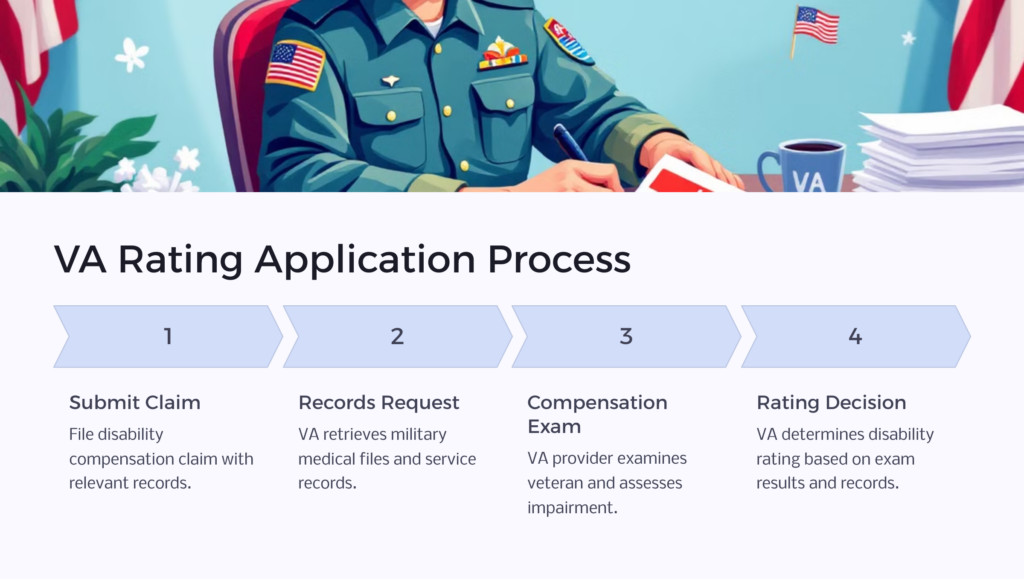Adjustment disorder is a condition that develops when someone struggles to cope with a stressful life event. As a diagnosable mental health condition, chronic adjustment disorder has been acknowledged since the 1980s when it was included in the Diagnostic and Statistical Manual of Mental Disorders (DSM-III).
Over the years, the criteria for adjustment disorder have been updated and refined. Currently, the DSM-5 defines adjustment disorder as the presence of emotional or behavioral symptoms within three months of an identifiable stressor. These symptoms must be out of proportion with the severity or intensity of the stressor and cause significant impairment in social, occupational, or other areas of functioning.
The stressful event that triggers adjustment disorder can involve anything from ending a romantic relationship and having trouble at work to experiencing a major catastrophic event. The key defining feature is that the person struggles to adapt to the new situation or stress.
Symptoms and Causes of Adjustment Disorder

Common emotional and physical symptoms associated with adjustment disorder include:
- Anxiety, worry, nervousness
- Feeling overwhelmed, sad, tearful, or hopeless
- Irritability, anger outbursts, frustration
- Lack of motivation, loss of interest in activities
- Poor concentration and decision-making
- Changes in appetite and weight
- Headaches, stomach issues, muscle tension
- Sleep disturbances, fatigue
Adjustment disorder is caused by a person’s inability to cope adaptively with a major life stress. The stressor may be a single event, or there may be multiple stressful events that accumulate over time. Examples of situations that can trigger adjustment disorder include:
- Ending a relationship
- Losing a job
- Experiencing a traumatic event
- Moving to a new place
- Dealing with a serious health diagnosis
- Death of a close friend or family member
Essentially any situation that is subjectively experienced as stressful or exceeds the person’s resources for coping can lead to adjustment disorder. The mental disorder reflects the person’s time-limited failure to manage the normal process of psychological adjustment to these difficult circumstances.
Prevalence of Adjustment Disorder in Veterans
Chronic adjustment disorder is extremely common among veterans. Studies show that around 50-70% of veterans receiving mental health treatment have been diagnosed with adjustment disorder.
There are a few key reasons why adjustment issues are so prevalent among those who have served in the military:
- Transitioning back to civilian life after deployment is very challenging and involves considerable life stress. This can overwhelm veterans’ usual coping abilities.
- Deployment and combat exposes veterans to very traumatic situations that can be difficult to process and adjust to. Rates of PTSD are also very high.
- Many veterans struggle with changes in their responsibilities, roles, and relationships after returning home from service. This requires major adjustment.
- Veterans often lack adequate social support systems or mental health resources which are needed for adaptive coping.
Some symptoms that veterans exhibit more frequently with adjustment disorder include isolation/withdrawal, explosive anger, and feeling alienated/like they no longer fit in with civilian life.
Adjustment Disorder VA Rating: The Basics
How the VA Rates Mental Health Disorders
The Department of Veterans Affairs (VA) uses diagnostic criteria from the DSM-5 to evaluate and rate all mental health conditions, including adjustment disorder. Disability ratings are assigned based on the severity of occupational and social impairment caused by the disorder.
There is a General Rating Formula used by the VA which gives criteria for ratings from 0% to 100% based on factors like:
- Ability to maintain relationships
- Reliability, productivity, and pace at work
- Extent of disturbance in motivation and mood
- Ability for self-care and normal daily activities
- Presence of suicidal ideation or danger
- Memory, concentration, and judgment deficits
Just meeting diagnostic criteria for adjustment disorder itself does not guarantee any particular rating. The VA has to determine how much this mental disorder functionally impacts the veteran.
Specific Criteria Used by VA for Rating Adjustment Disorder
The VA determines disability ratings for adjustment disorder using the same General Rating Formula as described above. However, there are some additional specific considerations given its characteristics:
- Timecourse matters – adjustment disorder, by definition, only lasts up to 6 months after the stressor occurs. Longer persistence suggests a different disorder.
- Context of the stressor is important – the VA considers if there is clear documentation of the associated traumatic or stressful event that caused the adjustment difficulties.
- Pre-existing conditions – if the veteran had previous mental health issues, it can be harder to determine impairment caused specifically by the adjustment disorder. Comparisons are made to functioning prior to the stressor.
So while general impairment criteria guide disability ratings, these additional factors help the VA determine if the adjustment disorder diagnosis accurately fits the clinical picture and context.
Adjustment Disorder vs. Other Anxiety-related Disorders
Since emotional symptoms are common in adjustment disorder, it can seem similar to conditions like generalized anxiety disorder or PTSD. However, there are some key differences that the VA pays attention to:
Adjustment Disorder
- Always preceded by an identifiable, time-limited stressor
- Symptom intensity or duration is disproportionate to the stressor
- Usually resolves within 6 months of the termination of the stressor
Generalized Anxiety Disorder
- Excessive anxiety and worry happening more days than not for at least 6 months
- Does not necessarily have an obvious specific trigger
- Persists indefinitely without treatment
PTSD
- Follows exposure to actual or threatened death/violence/injury
- Re-experiencing symptoms are prominent (flashbacks, nightmares)
- Hypervigilance and startle responses
- Results in longer-term functional impairment
So while adjustment disorder reflects a disproportionate response to a stressful circumstance, anxiety disorders like GAD and PTSD generally reflect more inherent biological vulnerabilities rather than situation-specific coping difficulties.
How Much Is Adjustment Disorder Eligible For?
The VA uses the General Rating Formula described earlier to determine percentages for adjustment disorder based on functional impact. Most veterans receive a disability rating in the 30-50% range for adjustment disorder.
For a 30% rating for adjustment disorder, there would be evidence of things like: conflicts with peers/coworkers, loss of motivation, depressed mood and anxiety, forgetfulness or mild concentration issues, sleep disruption, etc.
A 50% rating involves things like reduced reliability to maintain work duties, panic attacks more than once a week, memory issues, difficulty understanding complex commands, severe mood disturbances, difficulty establishing relationships.
So in summary:
- 0% – symptoms transient and expectable, only slight impairment
- 10% – mild or occasional symptoms with occupational impairment
- 30% – moderate symptoms or moderate difficulty functioning
- 50% – considerable loss of functioning with severe symptoms
- 70% or 100% – total occupational and social impairment
Adjustment disorder is viewed as a time-limited condition. But if symptoms persist at a disabling level after 6 months, it will likely be re-evaluated as a different anxiety or trauma disorder.
Adjustment Disorder VA Rating: In-Depth
Impact of an Adjustment Disorder VA Rating on Veterans’ Benefits

Receiving a VA rating for adjustment disorder can make a veteran eligible for several valuable benefits, like:
Financial Compensation
A monthly tax-free payment to the veteran. This depends on the rating percentage – for example a 30% rating would pay out $441 per month. Financial aid can support family needs.
Vocational Rehabilitation Services
Eligible veterans can access career counseling, resume development, skills training programs, job search assistance, and education tuition assistance. This can help veterans successfully return to the workforce.
VA Health Care
Cost-free medical/mental health treatment at VA facilities. This ensures access to therapy, medications, inpatient services that may be needed for adjustment difficulties. Ongoing care supports recovery.
So in many ways, receiving an accurate rating can be essential for a veteran to receive healthcare, disability accommodation, and financial help to cope with stress reactions during the transition back to civilian life.
Common Misconceptions About the Adjustment Disorder VA Rating
There are a few common myths about receiving a rating for this condition – the VA wants to be very clear:
Myth: An adjustment disorder rating is “temporary” or will be automatically reduced after a certain period of time.
Fact: Ratings are re-evaluated whenever new medical evidence is submitted, regardless of condition. Persistence of symptoms/impairment guides rating changes.
Myth: Adjustment disorder is a “minor” condition that is not really disabling compared to PTSD, so ratings tend to be low.
Fact: All mental health conditions are rated solely based on degree of occupational and social impairment. The adjustment disorder diagnosis itself does not limit the possible rating percentage.
Myth: Since adjustment disorder resolves quickly after the stressor ends, it should not qualify for ongoing compensation.
Fact: Some veterans experience impairment from adjustment difficulties that continues long after the initial triggering situation. Rating decisions take this into account.
The bottom line is that each veteran’s circumstances are different. The VA guidelines ensure that ratings are based on the facts and level of disability for that individual.
The Process: From Diagnosis to VA Rating
Steps in Getting Diagnosed With Adjustment Disorder
The process to getting an accurate adjustment disorder diagnosis typically involves:
1. Noticing Impairment – The veteran and close others observe declining functioning, strained relationships, or new sustain emotional/behavioral symptoms that develop in reaction to a stressful circumstance.
2. Initial Screening – A primary care doctor, VA health professional, or community provider conducts an initial screening to assess symptoms. They may use checklists, interviews, or assessments to determine if an underlying mental health issue could be present.
3. Referral for Comprehensive Evaluation – If the screening indicates, the veteran gets referred to a specialist like a psychologist or psychiatrist for comprehensive diagnostic evaluation.
4. Diagnostic Interviews & Testing – The mental health professional thoroughly evaluates symptoms, administers clinical interviews, assesses functioning/coping capacity, reviews military/psychosocial history and the context of presenting problems.
5. Differential Diagnosis – Based on all available data, the provider determines if criteria are met for adjustment disorder or if symptoms better fit another condition like PTSD, depression, etc.
Getting the most accurate, precise diagnosis lays important groundwork for seeking appropriate treatment and benefits support.
Applying for a VA Rating for Adjustment Disorder

To receive a VA disability rating for this disorder, the formal application process includes:
1. Submit Disability Compensation Claim – The veteran files a claim for impairment connected to a mental health condition that developed during or stems from military service. Relevant records, like mental health diagnoses, should be included.
2. VA Requests Service Records – The VA retrieves the veteran’s military medical files and service records to further document evidence related to the condition.
3. Compensation Exam by VA Provider – A VA psychiatrist or psychologist examines the veteran, reviews all records, conducts testing, and thoroughly assesses impairment and capacity for functioning.
4. VA Makes Rating Decision – Based on the exam results and entire record, VA rates the level of disability using standard criteria for that condition. The percentage rating decides compensation amounts.
This process aims to accurately reflect the impact of adjustment difficulties on veteran functioning and long-term well-being. Ongoing access to care can also be included with an approved rating.
What to Expect During the VA’s Evaluation Process
When getting assessed by a VA provider for disability determination, the evaluation appointment is very comprehensive. Veterans can expect:
- Discussion of military history.
- Questions about onset of symptoms, diagnosis process. treatment history.
- Identification of the stressor event tied to the adjustment disorder.
- Checklists, interviews, or questionnaires about current mental health difficulties.
- Cognitive screening assessments.
- Evaluation of level of social/occupational impairment.
- Assessment of other disorders that could account for symptoms – like PTSD, depression, etc.
- Determination if the adjustment disorder is the primary cause of functional disability.
The examiner synthesizes all available records, test results, and the clinical interview to judge current and expected future functioning. It is very important veterans share openly about their struggles so the true disability level can be captured.
Tips to Ensure a Fair Adjustment Disorder VA Rating
Gather Necessary Documentation
There are several things veterans can do to make sure the VA has everything needed to make an appropriate rating determination:
- Inform all treating professionals that you are applying for VA disability. Ask them to thoroughly document symptoms, impaired functioning, diagnosis specifics, and treatment recommendations in their chart notes.
- Specifically ask mental health providers to submit letters, statement, or completed DBQ forms that summarize diagnosis, symptom severity, duration of treatment, and prognosis.
- Keep a personal record of all medical appointments, hospitalizations, medications tried, and treatment outcomes. This corroborates what is in the official medical chart.
- Write an Impact Statement summarizing how symptoms specifically limit ability to function at work, socially, regarding self-care and daily tasks.
Thorough, quality documentation is key!
Communicate Effectively With Healthcare and VA Staff
How veterans communicate with providers and VA personnel can influence their disability benefit amount and the VA disability process. Some tips are:
- Track mood/symptoms to give accurate real-world examples of functioning difficulties.
- Share honestly about distress experienced, even with uncomfortable emotions like anger or hopelessness. Don’t downplay it!
- Explain how family, work, self-care routines are affected by the mental condition currently and over time.
- Give the full context of the underlying stressor event and why it overwhelmed coping capacity.
- Compare current functioning to skills/capabilities demonstrated prior to the adjustment difficulties.
Telling the full story is necessary for accurate ratings!
Appealing a Rating If Necessary
If a veteran believes their adjustment disorder rating does not truly reflect disability level, they have 1 year from the decision date to file an appeal. Strategies include:
- Submitting additional medical evidence like updated progress notes or letters from treating doctors regarding worsening symptoms and functioning struggles.
- Identifying any relevant symptoms or impairment impacts that may have been overlooked initially.
- Requesting an independent medical evaluation for a second opinion.
- Attending all scheduled reassessment appointments even if functioning improves slightly for a time – setbacks can still occur.
Continually advocating for appropriate support is important, so veterans can focus on recovery.
Importance of a Proper Adjustment Disorder VA Rating
Getting an accurate rating for disability connected to adjustment disorder is critical for multiple reasons:
- Enables access to healthcare, medications, therapy that may be unaffordable otherwise. This treats symptoms arising from military service.
- Reflects the true severity of impairment and barriers to functioning the veteran faces.
- Determines appropriate amount of financial aid to help support family needs.
- Allows utilization of work training/education programs catered to develop skills veterans need for suitable civilian careers.
- Opens doors to community resources and local support services.
In all, a fair rating makes a lasting difference in veterans genuinely reintegrating and recovering after the profound experience of military duty and deployment. The VA aims to fully understand how emotional wounds can impact veterans’ lives and provide compensation accordingly so they can build a hopeful future.
All veterans who gave so much by serving our country deserve support transitioning through the inevitable pains of adjustment back into society. Compassionate assistance will provide the strength these brave men and women need to gain resilience and live meaningfully. There are always brighter days ahead.
 Benefits.com Advisors
Benefits.com Advisors
With expertise spanning local, state, and federal benefit programs, our team is dedicated to guiding individuals towards the perfect program tailored to their unique circumstances.
Rise to the top with Peak Benefits!
Join our Peak Benefits Newsletter for the latest news, resources, and offers on all things government benefits.


















